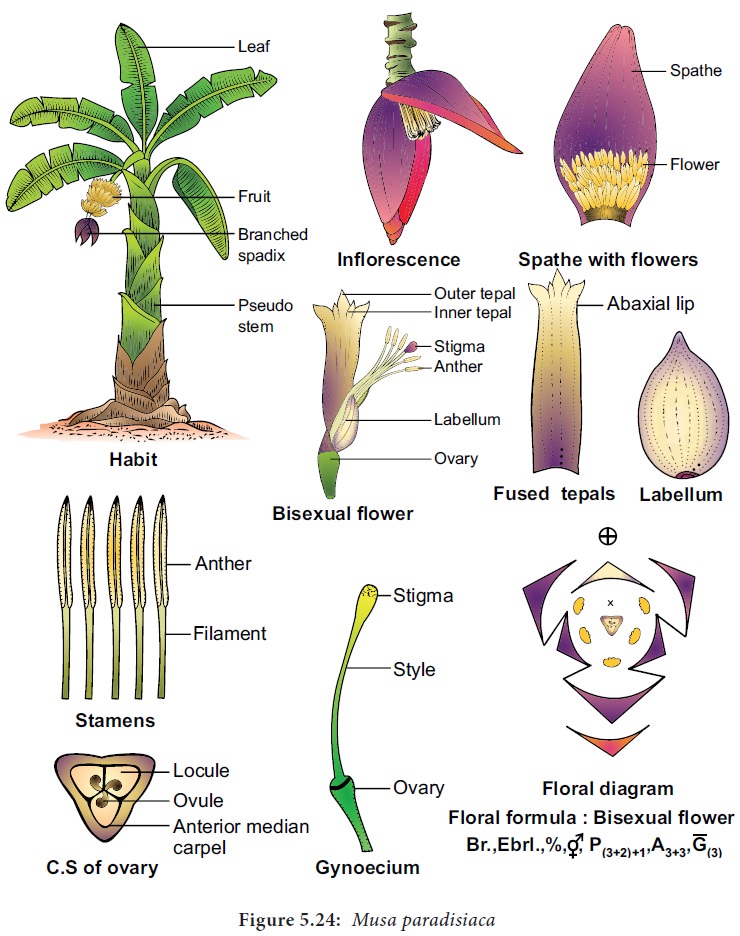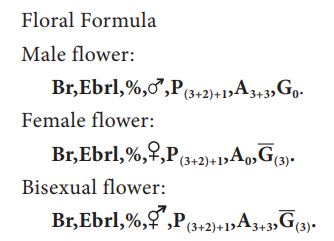Chapter: 11th Botany : Chapter 5 : Taxonomy and Systematic Botany
Botanical Description of Musa paradisiaca

Botanical
Description of Musa paradisiaca.
Habit: Monocarpic
gigantic herb.
Root: Fibrous
adventitious root system.
Stem: The real stem is underground called rhizomatous. The apparent, aerial erect unbranched pseudo stem is formed by the long, stiff and sheathy leaf bases which are rolled around one another to form an aerial pseudostem. The central axis that is concealed at the bottom of the pseudostem is called shaft.
The shaft elongates, pierces through the pseudostem and produces an inflorescence terminally.
Leaf: Simple
with a long and strong petiole. The
leaf blade is large and broad with sheathy leaf base. Leaf exstipulate and
obtuse pinnately parallel venation which extends upto the leaf margin
phyllotaxy is spiral.
Inflorescence:
Terminal
branched spadix. Flowers are
protected by large, brightly coloured spirally arranged, boat shaped bracts
called spathe. When the flowers open, spathe rolls back and falls off.
Flower: Bracteate,
ebracteolate, sessile, trimerous,
unisexual or bisexual, flowers are zygomorphic and epigynous.
Perianth:
Tepals 6,
biseriate, 3+3 syntepalous, arranged
in two whorls of 3 each and homochlamydeous, the three tepals of the outer
whorl and the two lateral tepals of the inner whol are fused by valvate
aestivation to form 5 toothed tube like structure called abaxial lip, the
posterior inner median tepal is distinctly broad membrancus and free called
labellum.

Androecium:
Stamens
6, arranged in two whorls of 3 each,
arranged opposite to the tepals. Only five stamens are fertile and the inner
posterior stamen is either absent or represented by staminode. Anthers are
dithecous and they dehisce by vertical slits. Filament is simple and filiform
and rudimentary ovary or pistillode is often present in the male flower.
![]()
![]()
![]()
Gynoecium:
Tricarpellary,
syncarpous, the median carpel
anterior, trilocular, ovary inferior, numerous ovules on axile placentation.
Style is simple and filiform, stigma trilobed. Septal nectaries are present.
Fruit: An
elongated fleshy berry and seeds are
not produced in cultivated varieties.
Floral Formula

Related Topics